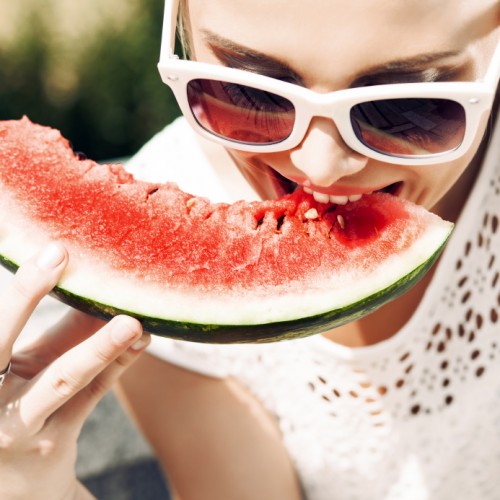
Fruit comes in so many sizes and variations that it’s simply not enough to say ‘fruit is good’ or ‘fruit is bad’, regardless of what you may hear from your friends. The quality of a fruit for dietary purposes varies wildly depending on your needs and goals, but we can at least point to a few to be excited about and a few to stay wary of for your healthy lifestyle.
Good and Bad Fruit for a Healthy Lifestyle
 The Good
The Good
- Berries. Antioxidants, phytonutrients, and just enough fiber and sweetness to round them out, berries have a place in almost any diet—just don’t overdo it (a rule to remember with any fruit on either of these lists).
- Pomegranates. The powerful antioxidants found in pomegranates can help keep the natural oxidative damage to your system at bay, slowing the aging process and keeping you fitter, longer.
- Apples. Varieties vary wildly in health benefits and nutritive values, but you can always rely on apples to have a nice chunk of soluble fiber to balance out the sweetness—making them the perfect snack replacer.
- Cherries. Thanks to high concentrations of anthocyanins, tart cherries can work wonders for keeping muscle pain and general inflammation at bay, helping you to recover and hit the gym again all the sooner.
- Grapefruit. All the benefits of an orange, with less sugar and a few extras, there’s a reason the ‘grapefruit diet’ works far better than anyone would expect.
- Papaya. Combatting indigestion with papain, inflammation with chymopapain, and scurvy with Vitamin C, the papaya is something of a wonder fruit.
The (Not So) Bad
- Melons. There’s a lot going for melons, but many varieties are simply too dense with sugar without enough fiber to compensate. Be especially aware of watermelon if you’re trying to avoid sugar.
- Bananas. At a whopping 110 calories each, the calorie and sugar density of bananas makes it hard to fit them in to many diets. It’s better than 110 calories of chocolate, though.
- Grapes. As a high-glycemic food, you should avoid grapes unless you have a good task to put the extra sugar to—you can use them as an exercise follow up to get your muscles ready for another round, but don’t snack on them when another fruit would be more suitable.
- Oranges. There’s a lot to recommend about oranges, but they don’t show well in comparison with graperfruit, lemons, or other citrus—the sugar content’s simply too high.
The Ugly
- Juices. Consider that the primary reason fruits ‘work’ for a diet is fiber to counter the impact of fructose—now toss out all that fiber, any nutrients locked up in flesh or seeds, and keep only the superficial taste and sugar of the original fruit. Juices may taste good, but many are horrible for you and are just not conducive to a healthy lifestyle. Orange juice, for example, shares a calorie density, sugar content, and acidity level on par with a glass of cola. AVOID FRUIT JUICE unless you have a good reason for drinking it (and know your stuff).
